It’s amazing what a little vaccine will do for your outlook. I’m due for my second dose of Moderna in the days ahead, and it took me all of a week after my first shot to get online and plan my first flats trip since well before the coronavirus outbreak.
Bahamas, here I come.
But first, some vise time. Living in the landlocked — and still quite frigid — environs of eastern Idaho, flats fishing takes real effort. Certainly, early in the season (May and June, generally), we have the chance to cast to tailing carp in the shallows of our desert rivers. It’s as close to bonefish as we get, but the view of the basalt bluffs standing sentry over acres and acres of potato fields just doesn’t have the Caribbean vibe, you know?
And then, of course, there are the flies. They’re not impossible to come by locally, but they’re pricey. And, honestly, when you consider just how sparse and simple many bonefish flies are, it’s silly to fork over too much money when even the most ham-handed fly crafter (read: me) can tie up a dozen while enjoying a tumbler or two of good Caribbean rum.
My first trip to the Bahamas was a baptism by fire. Mother Nature threw everything she had at me, and she conspired with my own inadequacies as an angler. Like anything else, getting a feel for casting 80 feet of line on a regular clip takes practice. The flies proved to be the easiest part of the trip. Tying up a Gotcha literally takes five minutes, even after an irresponsible amount of Flor de Caña. And other patterns aren’t that much more difficult … or they’re even easier to tie.
If you’re aching for a visit to the cyan flats of the tropics, here are a few easy and classic patterns you can tie with just a quick visit to the local fly shop, even if that fly shop is hopelessly landlocked.

Gotcha
This little shrimp pattern is ridiculously easy to tie — I’m serious about the five-minute investment. Even better, the pattern works, and it works all over the tropics for bonefish. The history of the fly is pretty cool, too. Legend has it that angler Ted McVay, while staying at the Bonefish Club on Andros some years back, took some fibers from the carpet and crafted the sparse little pattern. It worked so well that, every time a fish hit the fly, guide Ruper Leadon would say, “Gotcha.”
Traditionally, the pattern is tied with a tinsel body, but I like to use Straggle String, a sparse, micro-chenille wrap that adds a bit of flash and action to the fly. I like lighter colors ranging from beige to light pink. The fly’s eyes can be either bead-chain eyes or a lighter black plastic bar-bell eyes (depending on how fast you want it to sink), and I just tie a few short strands of polar flash in for the tail (which, in this impressionistic pattern, is meant to mimic a shrimp antennae.
Most Gotcha patterns use a light pink thread for the flies “head,” which, if you think about it, is really the tail of the shrimp. The idea here is to imitate the egg sac that female shrimp have, and it’s a pale pink or even orange in the natural crustacean.
I usually tie the Gotcha on the small size — size 4-6 — but on Andros or Abaco, where really big bones cruise in search of food, some guides insist on a size 2. If you have a guide, do as he or she says — chances are, they’ve done this a time or two.

The Pink Puff
Here’s another crazy-simple pattern even novice flats anglers can craft at the vise. And, for trout or salmon anglers, you probably have all the material you need — save for the saltwater hook — already stashed at the tying bench.
And, like the Gotcha, the Puff works. In fact, it might be my go-to pattern the minute I step off the boat and onto the flats for the first time. The pink head tied over the bead-chain eyes is another egg-sac imitation, albeit a gaudy one, and the grizzly hackle strips, since the fly rides hook point up, help keep the fly generally weedless. I use Polar Flash to add some sparkle, but the real kicker when fishing a Puff isn’t how it looks, but rather how it acts in the water.
The chenille “sac” saturates with water and the fly, since it’s fairly sparse, sinks quickly. When stripped within eyesight of a cruising bone, the sac creates a little “puff” in the mud or sand, just like a small shrimp or crab might do when it’s trying to get out of the feeding lane of a predator.
The action created by the fly is what attracts the fish. I think the sparkle from the Polar Flash is just an added bonus. I tie the Puff in sizes 4 and 6, and it might be the best fly I’ve used for bones across the Caribbean, from the Bahamas to Chetumal Bay.

The Crazy Charlie
A short list of easy-to-tie bonefish patterns wouldn’t be complete without perhaps the most classic flats pattern ever assembled at the vise. The Crazy Charlie, first tied by legendary Bahamian bonefish guide Charlie Smith, has been updated, bastardized, altered and generally disrespected over the years, but it remains the “base” pattern for any number of bonefish patterns that litter fly boxes from Eleuthera to Belize.
In the spirit of “simple,” I like to tie the Crazy Charlie just as it was intended. Sparse, shiny and generally on the small size (size 4-6). I do sometimes vary the color, but I still prefer lighter shades, from white and silver to a pale pink — the lighter shades just seem to work better where I’ve chased bones over the last decade or so.
Ingredients can vary, but I go with tinsel (or diamond braid microchennile), silver bead chain eyes and, depending on how fast I want it to sink, either white or beige bucktail or a sparse clump of light-shaded craft fur. Generally, that’s it.

The Boney Worm
Several years back, a buddy and I were DYI-ing across Long Island in the Bahamas, chasing bones on flats that could be reached by car. He was fishing a Pink Puff with consistent success … until his last fly came unraveled. Undeterred, with the pink chenille he used to craft the egg sac of the pattern dangling free, he continued to fish the pattern. And he continued to catch fish. Logic demanded that I research the “why” of it all, and it turns out that, in addition to crabs and shrimp, bonefish will also occasionally eat little worms that dig into the sand and mud on the flats. The loose-hanging chenille on my friend’s last Puff pattern serviceably imitated the little flats worm, and the bones literally ate it up.
It’s a simple pattern (in keeping with the theme). Simply tie a Crazy Charlie, but instead of tying in bucktail or craft fur, tie in an inch-long stretch of pink or orange chenille (take care to “seal” the free-floating stretch of yarn with either head cement or a quick shot of UR resin so it doesn’t come unraveled). For a more durable fly, use a stretch of wiggly worm. Seriously. Take note: If you choose to go with a silicone or rubberized material, do not use UV resin or head cement on the fly. You’ll melt the material.
I did even more research, and the worm pattern is very common in the South Pacific for bonefish in that corner of the world. I used them with success in Ascension Bay, and I know they work on Bahamian bones. The pattern is definitely worthy of a spot in the fly box on your next flats trip.
The final word
As challenging as fly fishing the flats can be — and if you’ve never done it before, don’t expect to tear it up your first time out — the flies used for bonefish can be remarkably simple. Sure, some fly tiers craft more complicated patterns that take more time at the vise, and they work remarkably well. But if you want to “tie your own,” the flies listed above are a good start. They’re easy to craft with readily available materials, and, if you can put them in front of cruising bones, they catch fish.




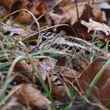
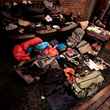
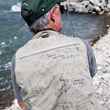




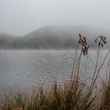
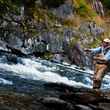



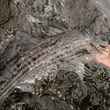



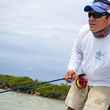





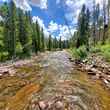

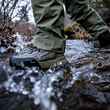

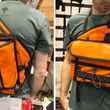
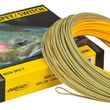
Comments
John Byron replied on Permalink
Legs on the Gotcha, especially hot pink legs, add to the fly's allure in the Bahamas.
Pages